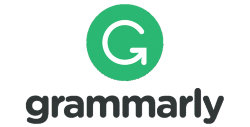In The Name of “Like This”: The Appropriation of Artwork In Digital Age
Abstract
The rapidly growing and massive information age in digital media platforms has
created and introduced cultural ramifications on various aspects of human life.
The ongoing era of globalization of the twentieth century has fuel the capability
in digitizing and manipulating information during traffic. Cultural growth in the
new age includes: ―cultural preservation as the main ingredient of the ordinary‖;
the proliferation of electronic visual images; and the construction of a
multifaceted and the individual identity or social imaginary. The artwork
currently is glorifying so many appropriations practices. All the art creations i n
the code of conduct are suitable for one aspiration, and that is the digital aesthetic
market. It is now customary to gather on the variety of artistic creations from
different cultures that are appropriated as new and authentic artwork. Thus, this
article discusses the appropriation for the artwork in the rise of the digital media
platform era. This paper is an anthropological study that refers to the interpretivereflexive paradigm as the analysis of path-work. Digital media is the unit of analysis in this study.
Keywords
Full Text:
PDFReferences
APJII. 2017. Infografis Penetrasi dan Perilaku Pengguna Internet di Indonesia Survey 2016. Asosiasi Penyelenggara Jasa Internet Indonesia.
ALA Digital Literacy Taskforce. 2011. Accessed July 17, 2018.
http://connect.ala.org/files/94226/what%20is%20digilit%20%282%29.pdf
Barker, Chris. 2008 Cultural Studies: Theory and Practice (3rd edition). London: SAGE Publications, Ltd.
Barthos, B. 2012. Manajemen Kearsipan Modern. Jakarta: Bumi Aksara.
Beech, D. 2010. Art and Value: Art’s Economic Exceptionalism in Classical, Neoclassical and Marxist Economics (Historical Materialism). Haymarket books publisher. Reprint edition.
Bennett, Sue. 2008. The ‗Digital Natives‘ Debate: A Critical Review of The Evidence. British Journal of Educational Technology, 39, 5, 775–786.
Bilton, C. 2011. Management and Creativity: From Creative Industries to Creative Management. Oxford: Wiley-Blackwell.
Boorsma, M. 2006. A Strategic Logic for Marketing. International Journal of Cultural Policy. 12, 1, 73–92. Retrieved July 17, 2018.
http://www.tandfonline.com/doi/abs/10.1080/10286630600613333.
Business Dictionary. 2013. Accessed July 17, 2018.
http://www.businessdictionary.com/definition/digitization.html .
Castells, M. 1996. The Rise of the Network Society. Cambridge: Blackwell Publishing.
Collin. 2013. ―Collins Dictionary.‖ Accessed July 17, 2018.
http://www.collinsdictionary.com/dictionary/english/digitalization#digitali
zation_1.
Dye, R. 2000. The Buzz on Buzz. Harvard Business Review (Nov/Dec), 139–146.
Retrieved July 17, 2018.
https://www.bzzagent.com/downloads/sales/BuzzonBuzz.pdf.
Fingers, L., and Soumitra Dutta. 2014. Ask, Measure, Learn: Using Social Media Analytics to Understand and Influence Customer Behavior. Cambridge: O‘Reilly Media.
Goldenberg, J., Libai, B. & Muller, E. 2001. Talk the Network: A Complex Systems Look at Underlying Process of Word-of-Mouth. Marketing Letters, 12, 3, 211–223.
Kaplan, A. M., and Haenlein, M. 2010. Two Hearts in Three-Quarter Time: How to Waltz the Social Media/Viral Marketing Dance. Business Horizons, 54, 3, 253–263. Retrieved July 17, 2018.
https://doi.org/10.1016/j.bushor.2011.01.006
Krajnovic, A., Sikirić D. & Jurica Bosna. Digital Marketing and Behavioral Economics. Conference: 1st Croatian Direct Marketing Association Conference. Retrieved July 17, 2018.
https://www.researchgate.net/publication/309490126_DIGITAL_MARKETING_AND_BEHAVIORAL_ECONOMICS.
Kurnia & Astuti. 2017. Peta Gerakan Literasi Digital di Indonesia: Studi Tentang Pelaku, Ragam kegiatan, Kelompok Sasaran dan Mitra. Retrieved July 17, 2018.
https://journal.uny.ac.id/index.php/informasi/article/download/16079/pdf_1
Martin, W. C., & Lueg, J.E. 2013. Modelling Word of Mouth Usage. Journal of Business Research, 66, 801–808.
Murray, M.C. & Perez, J., 2014. Unraveling The Digital Literacy Paradox: How Higher Education Fails at the Fourth Literacy. Issues in Informing Science and Technology, 11, 85–100.
McLuhan, Marshal. 1964. Understanding Media: The Extensions of Man. Accessed July 17, 2018. http://robynbacken.com/text/nw_research.pdf
Padilla-Meléndez, A., & del Águila-Obra, A.R. 2013. Web and Social Media Usage by Museums: Online Value Creation. International Journal of Information Management, 33, 5, 892–898. Retrieved July 17, 2018.
http://linkinghub.elsevier.com/retrieve/pii/S026840121300090X.
Roberts, D. 2008. ―Digitisation and Imaging.‖ In Jackie Bettington., et al., Keeping Archives. 3rd Edition. Australia: Australian Society of Archivist Inc.
Simanowski, Roberto. 2016. Digital Humanities and Digital Media: Conversations on Politics, Culture, Aesthetics and Literacy. London: Open Humanities Press.
Simon, N. 2013. ―The Participatory Museum.‖ The Participatory Museum—A Book by Nina Simon. Accessed July 17, 2018.
http://www.participatorymuseum.org/chapter1/.
Tapscott, Don. 1996. The Digital Economy Era: Promise and Peril in the Age of Networked Intelligence. New York: McGraw Hill.
Toffler, A. 1980. The Third Wave. New York: Morrow.
Widagdo. 2008. ―Field Art Research‖. Article presented in National Conference of Art Research: Mapping the Pre Factum and Post Factum Research Methodology as A Form of Actualization of Research-Based Art Campuses. Bandung: Puslitmas STSI Bandung
DOI: https://doi.org/10.24821/ijcas.v6i1.3273
Refbacks
- There are currently no refbacks.

This work is licensed under a Creative Commons Attribution 4.0 International License.




